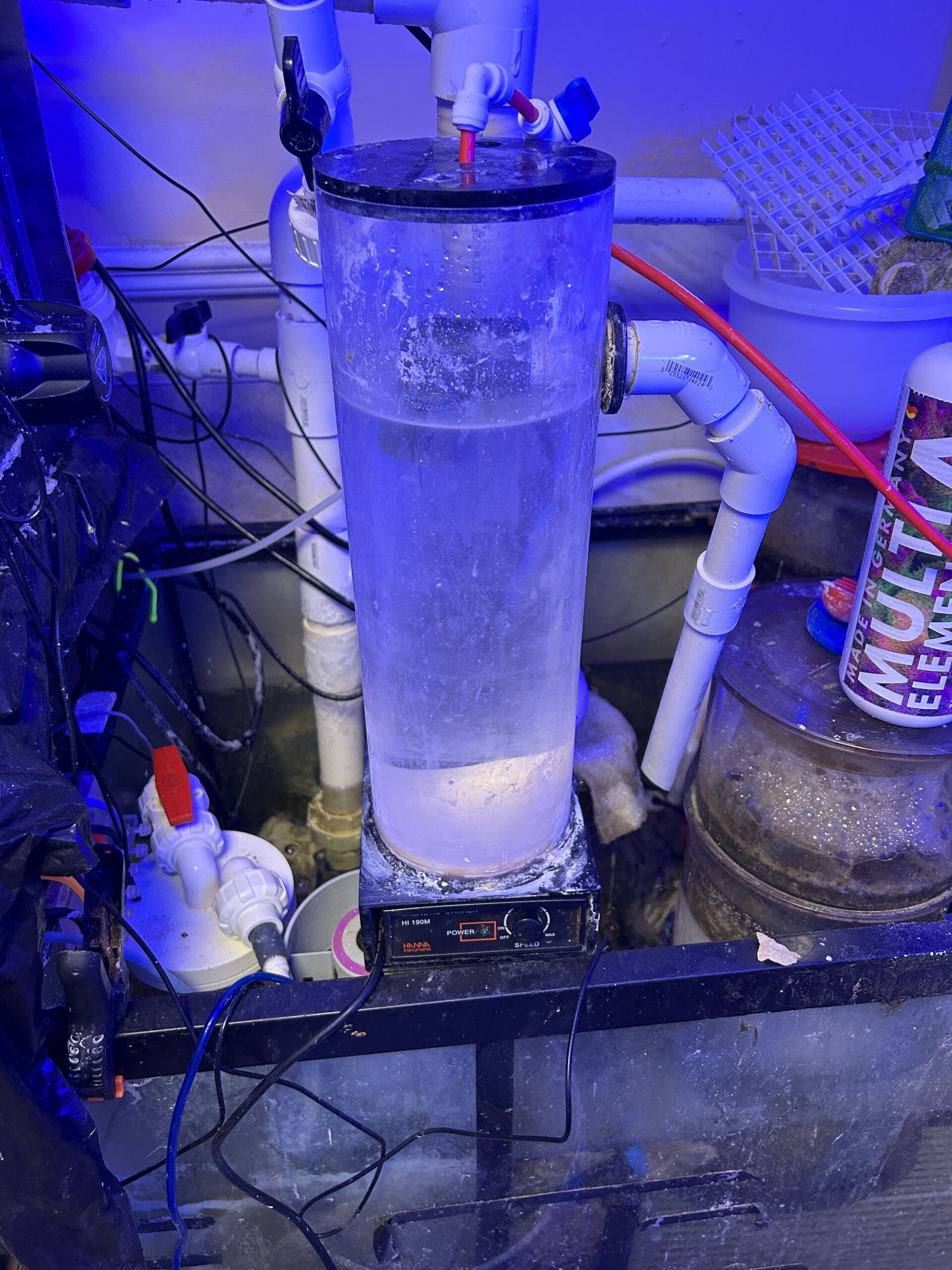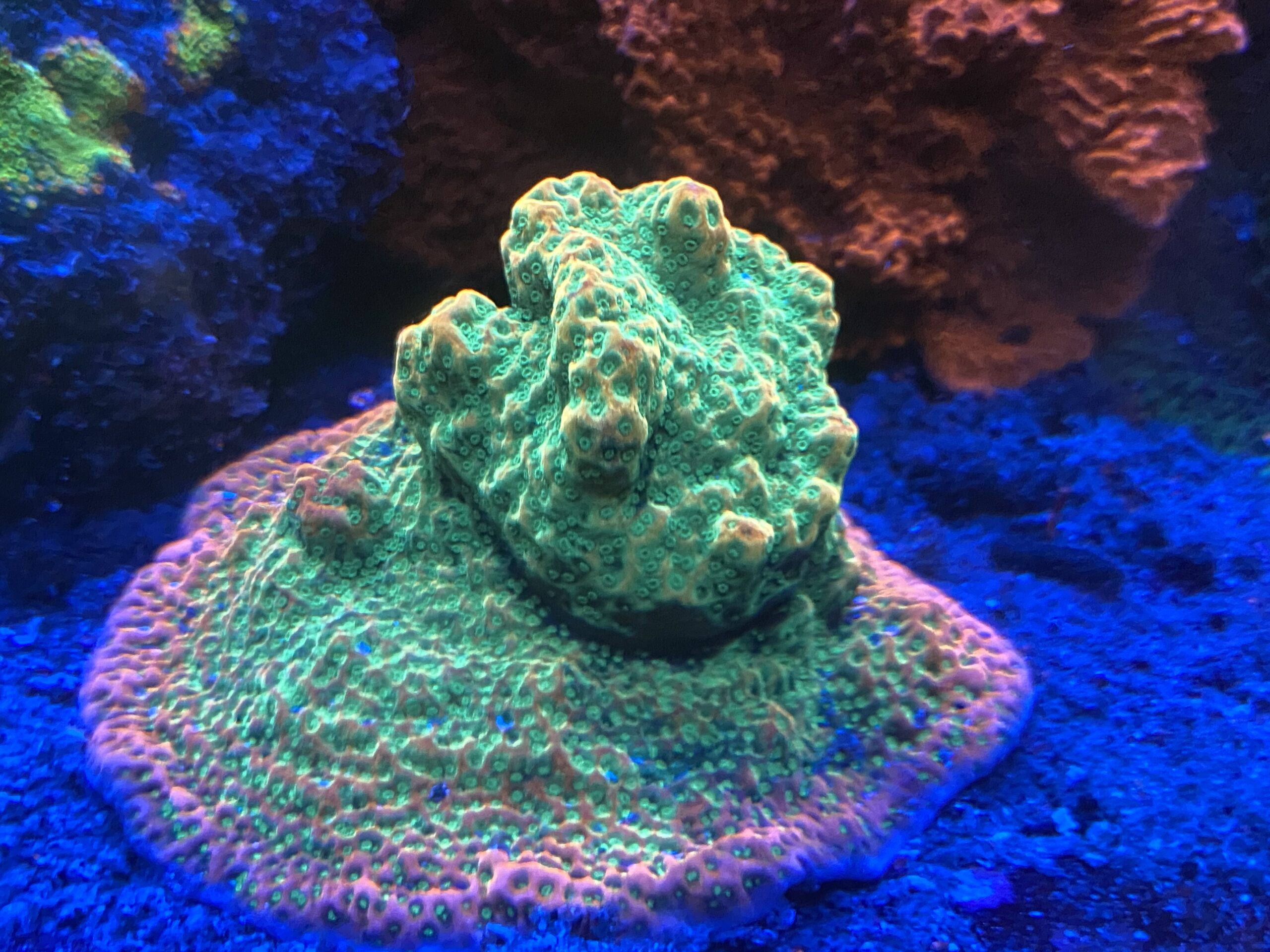During the early years of the hobby, some of the factors that were most intently looked at were calcium levels, pH, and salinity. Over time these have kind of faded from being thought of as critical and have been replaced with regular testing being done on alkalinity, trace elements, and nutrients.
Currently, most hobbyists are having unparalleled success with their tanks, and this is undoubtedly the result of everyone now having access to superior equipment, as well as the latest information, both of which allow for anyone who is willing to put in the time and effort to have a thriving tank. Despite this level of success, one of the factors that keeps us interested is that we are constantly striving for our tanks to be better. Typically, better means faster growth and with it better coloration in our corals.
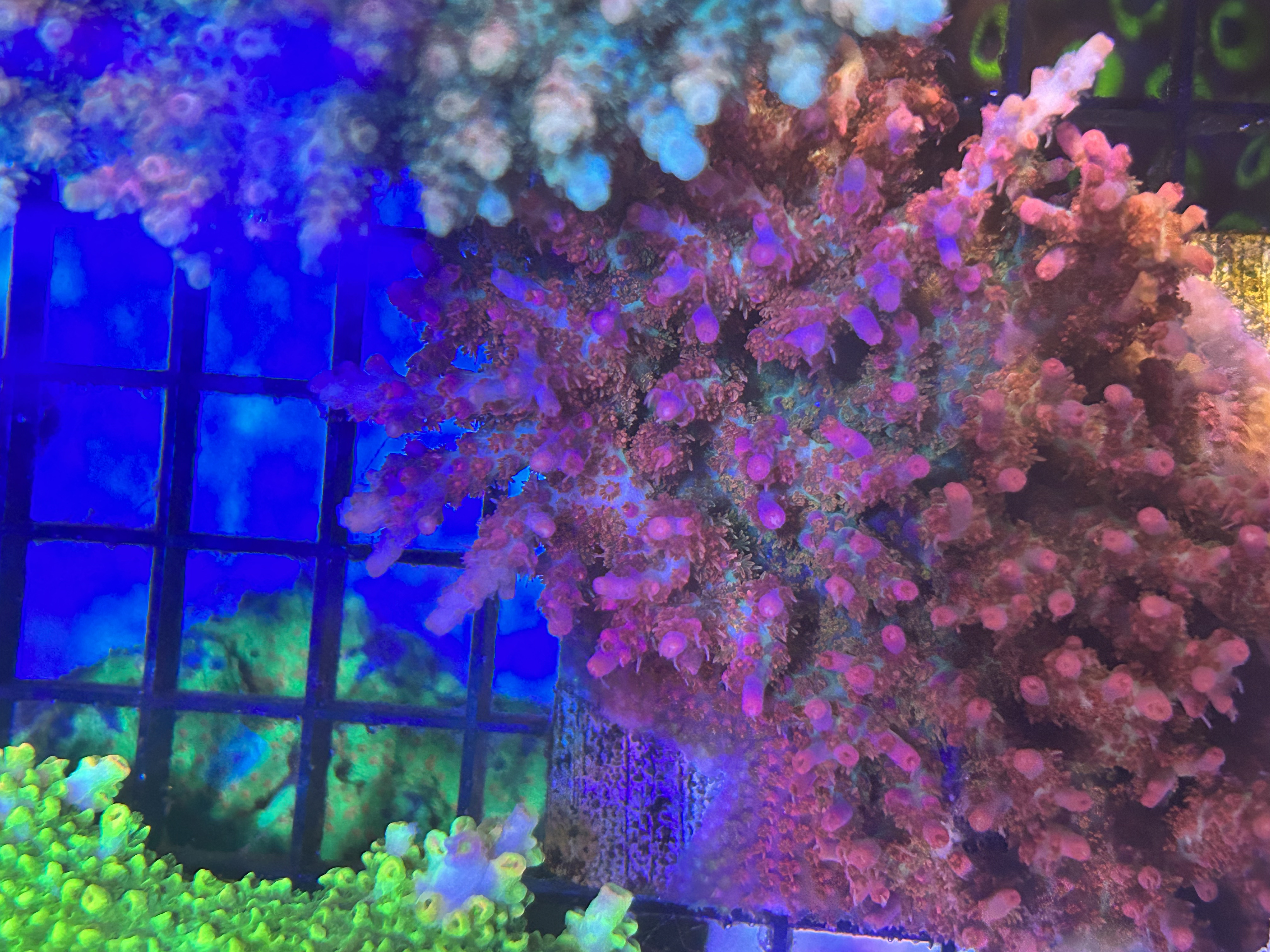
Faster growth
One of the aspects that have come to light that may play a role in achieving a better tank is maintaining a “higher” pH level than one that is usually easily achieved. A study done by Bulk Reef Supply showed significantly faster growth in sps corals when the pH of a tank was kept above 8.0. While there was still growth at lower pH, range 7.7-7.9, the growth in the tank with higher pH was approximately 25% faster. In my own tanks and in tanks of others who I feel have successful tanks, we have also seen faster growth and more colorful corals when the pH was in the higher range. However, I should note that this faster growth may not show in all corals and I have seen and have had numerous successful tanks with good growth in tanks in the lower pH range.
While pH has lost the panache of trace elements and ICP testing, it is still a test most of us look at regularly and it is on most monitors. During the first decade of keeping sps corals when we tested frequently for the calcium level in our tanks, we used kalkwasser (water saturated with calcium hydroxide) to supply the calcium, and pH was probably the second most common parameter that we tested for, even though due to the use of kalkwasser there was rarely any issue with low pH.
However, as kalkwasser was replaced with calcium reactors or dosers and alkalinity became the key parameter to be tested for, pH gradually fell out of favor in terms of how important it is for coral growth. In the past couple of years, several studies have shown that one of the ways to increase the growth in our corals is to maintain a pH greater the 8.0. Interestingly it was when these studies started coming out that I realized that my tank and many other tanks I had seen all had difficulty getting the pH level to ever be over 8.0, let alone maintain it above this level.
Before explaining why it is beneficial for having the pH above 8.0, it is necessary to understand what pH is. pH is a scale of the acidity or alkalinity of a solution ranging from 0 to 14 with 7.0 being neutral. Solutions below 7.0 are considered acidic, while those above 7.0 are considered basic. The scale for measuring these levels is logarithmic, so a level 1 measure higher is actually ten times the level of solution 1 point lower. All marine aquaria need to have a pH greater than 7, and while we can grow corals at pH levels of 7.8 or even 7.6, it has been shown in studies and in our own tanks, optimal growth will occur when the pH is 8.0 to 8.4. It should also be noted that when growth is good, sps corals will have good growth tips and when these tips are present the coloration of the corals is generally better than when no growth tips are present.
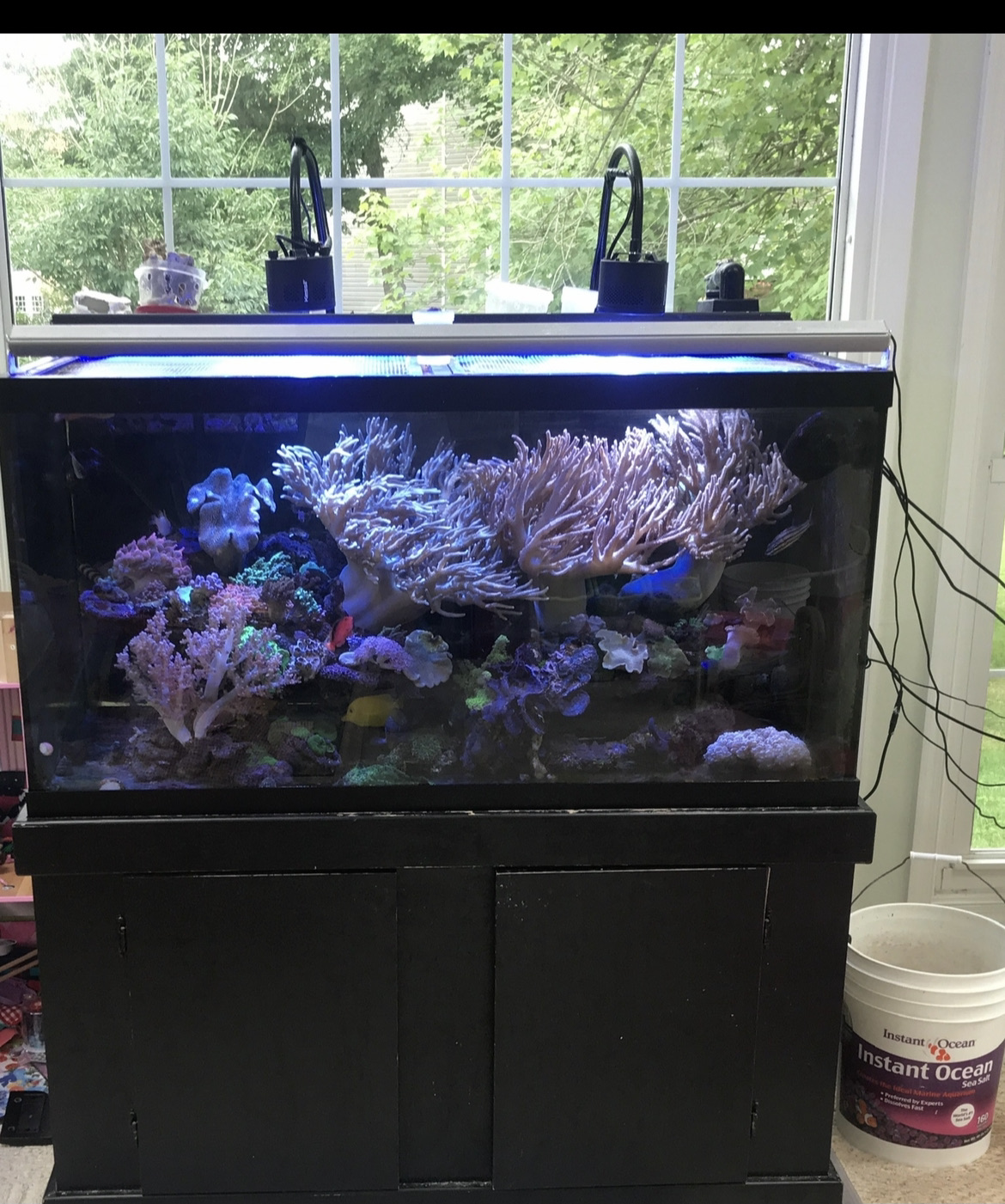
While the explanation of pH is quite simple, the effect that pH can have on corals is complex in that it affects a number of aspects of a coral’s health. The first of these factors to be considered is calcification. Simply put, calcification in corals is the rate at which reef-building corals put down a calcium carbonate skeleton and this is affected by temperature, salinity, alkalinity, and pH. With the first three factors being constant, it has been found that at higher pH levels, 8.2-8.4, calcification and hence the growth of the corals can be significantly higher than when the pH is less than 8.0.
Unfortunately, many factors contribute to pH levels being less optimal, so it is not possible to simply dose enough chemicals to bring the pH of a tank to these levels. While dissolved organics breaking down or high nutrients converting nitrate to nitric acid play a role, a big factor that is often neglected is the CO2 level around the tank. This can be in the room in which the tank is housed or from excess CO2 leaking into the tank from a calcium reactor. While CO2 is a great fertilizer in freshwater tanks for stimulating plant health and growth, in a saltwater tank its presence in high or even moderate levels in the tank or in the room air surrounding the tank can significantly reduce coral growth by acting to acidify the tank water. In addition, it has recently been found that high CO2 levels and hence low pH levels can contribute to coral colonies being over-colonized with pathogenic bacteria. As a result of these findings, I have worked on how best to reduce the CO2 levels in and surrounding my tanks.
For the past three years in my own tanks, I have worked on reducing the overall CO2 levels in the house and in the tanks themselves and thus raise the pH level in these tanks. Most of the methodologies worked to some degree, but some have worked much better and are easier to employ than others. Before describing how to reduce these levels it might be beneficial to understand what normal CO2 levels are and how to get our tanks and rooms to these levels. The normal level of CO2 in the atmosphere is 410-420ppm in the air outside our homes. This will vary and can change based on rainfall, time of day, and time of year. This is the level that oceans equilibrate with from the air so that they have approximately the same level dissolved in them.
The pH of the ocean
At this level, the pH of most ocean water is 8.1. However, it should be noted that as the CO2 level in the atmosphere has risen over the last 150 years, the pH of the ocean has dropped by .1 from 8.2. While this may not seem significant, since the pH scale is logarithmic this .1 reduction is almost a 30% drop in pH, which has resulted in lower calcification rates and growth in some corals. Since increased CO2 levels and the resultant reduced pH levels have such an impact on calcification and the health of corals, understanding how to decrease CO2 levels and raise pH has gained new importance, both in the ocean and in the hobby.
As noted above normal atmospheric CO2 levels are around 400-410, but they may be lower or higher for short periods of time depending on the time of year, precipitation levels, and even time of day. Any changes in these CO2 levels can significantly affect the pH in our tanks. In order to better understand this relationship, I purchased a room CO2 monitor as well as an outdoor monitor so that how the room’s CO2 level, as well as the outdoor levels, affected the tank’s pH. I now use these to help show why my tank’s pH never went over 8.0 and why my corals were so slow growing compared with the same corals I had seen in other’s tanks.
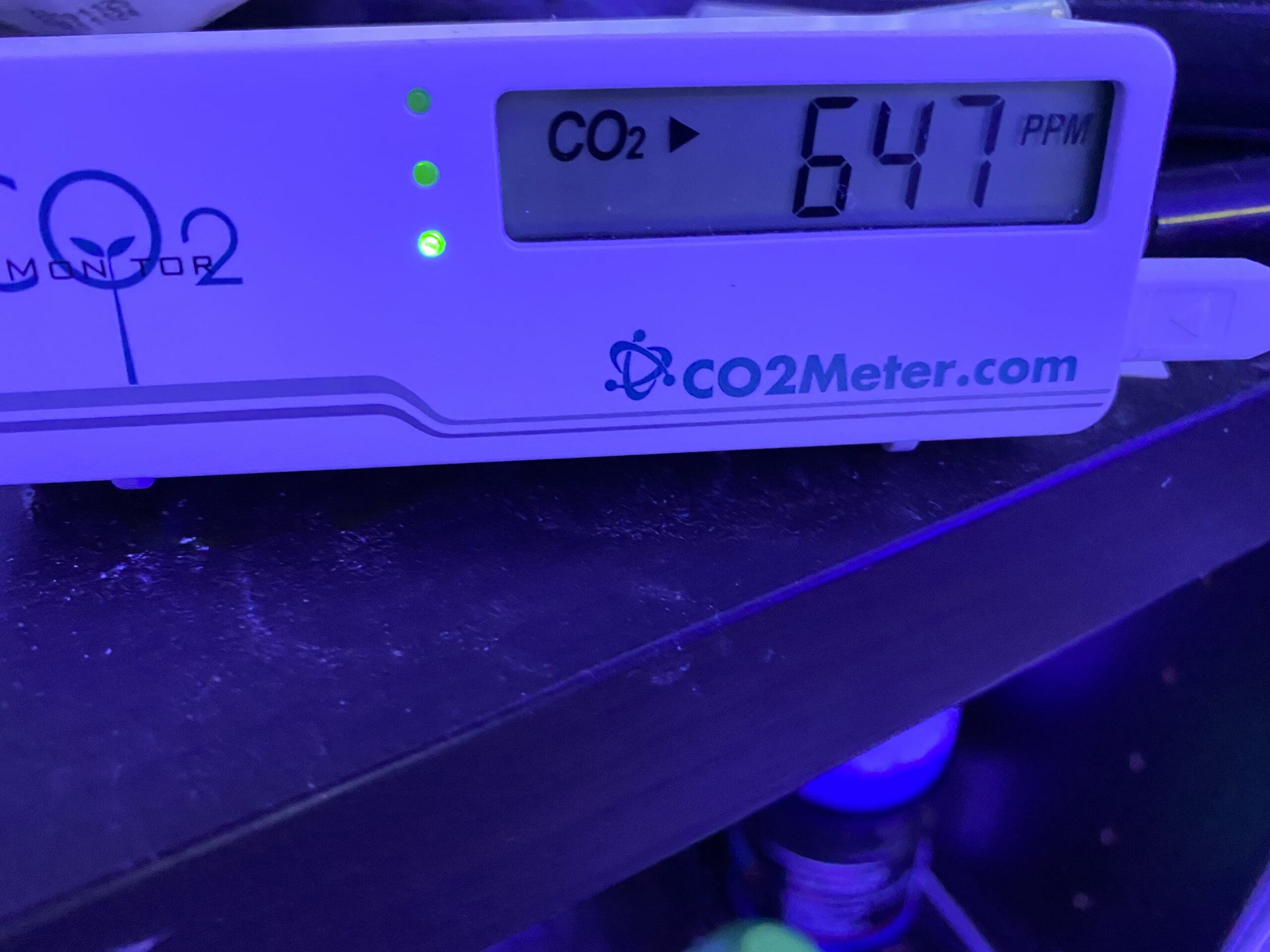
The monitor is relatively inexpensive and has been a real aid in understanding and getting a better handle on how the exterior CO2 levels affect my tanks. It was purchased in the summer, when the house was closed off due to the heat so that the air conditioning could keep the house cool. It was immediately apparent that in this closed situation that the CO2 levels were high, even in the tank room, which was closed off from the rest of the house, and is mostly unoccupied. The CO2 in that room ranged from 800-1200 during the course of the day when the windows were closed 24/7 due to the heat.
If we had company or I did a lot of activity around the tank the tank room’s CO2 level would climb up even higher to 1400-1600 range. Over time and with much monitoring, I found that as long as the CO2 level remained under 800 the pH would stay around 8.0, but if it went higher for a longer period of time then the pH would drop accordingly. So keeping the CO2 below this and the pH above 8.0 became the goal.
In order to achieve this goal, I made several changes and adjustments in the room and to the equipment being used on the tank. The first change was to switch from a calcium reactor to a dosing system. This was done as despite my best efforts the water coming from the reactor had a lower pH than I desired, even after running through a chamber of calcareous media. This change helped bring the pH up a bit, but it was not as significant as I had hoped. The second change was to add a CO2 scrubber to the intake of the protein skimmers. This improved the pH slightly and kept the pH above 8.0 and sometimes even brought it up to 8.1. But due to the size of the tank and how much CO2 was being produced in the house, the media had to be changed every two weeks, which was cost prohibitive, and it also reduced the effectiveness of the skimmers due to it reducing the airflow. For these reasons, I tried to find some better methods.
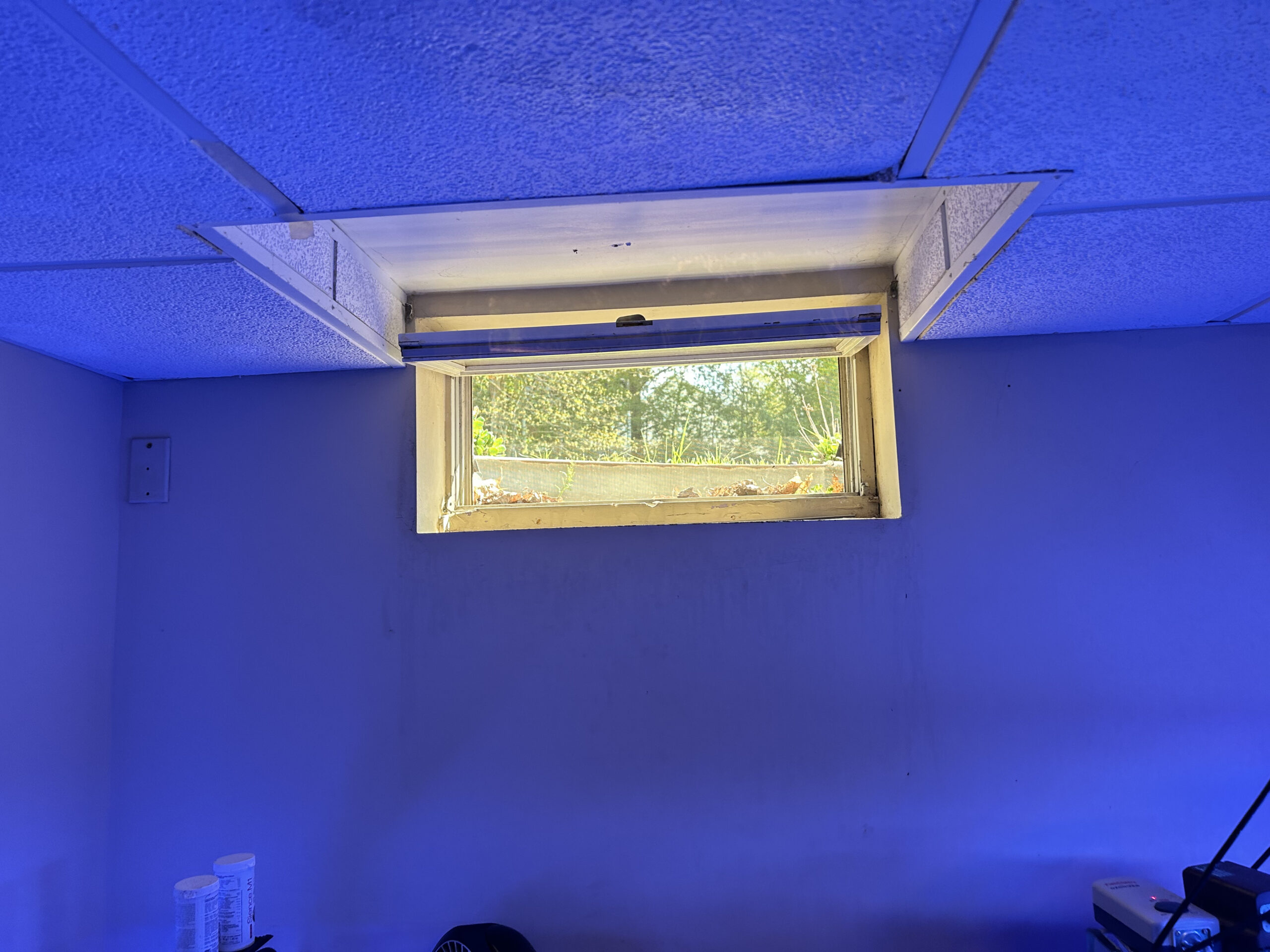
The first and simplest was to open the windows in the fish room at night when it was cool enough not to overheat the tank or cause the air conditioning to run extra and to run a small fan to blow out the high CO2 air from the room. This worked well, as the pH would not drop below 8.0 at night and the room CO2 would be less than 500 almost every morning. However, the windows still needed to be closed during the day, and the room CO2 levels would rise then and keep the pH from rising to the desired level. In order to try and get fresh air into the system constantly, airlines were run to the outside from the intake of the skimmer so that they would constantly draw in air with lower CO2. This improved the pH to 8.1 to 8.2.
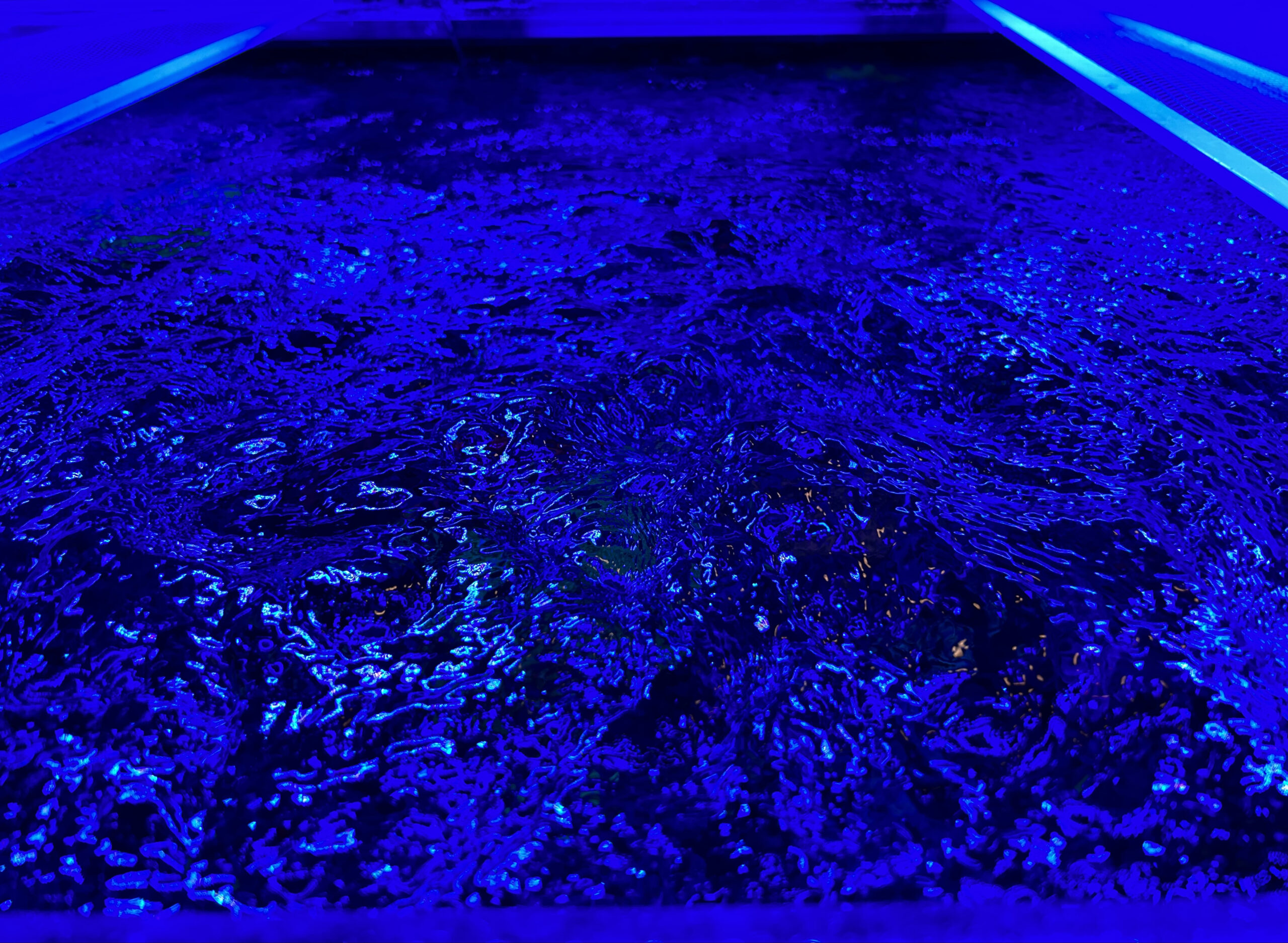
To further reduce the CO2 level in the tank the flow within the tank was changed so that more surface agitation occurred especially at night, so that when the room CO2 levels were lowest and oxygen levels the highest, the CO2 in the tank would be driven off and more oxygen brought into the tank. This change kept the pH from falling below 8.1 at night. And starting from a higher baseline allowed the pH to rise higher during the day. It should be noted that when air is actively drawn in from outside it can also draw in unwanted materials so it should be drawn in over carbon to remove any unwanted material.
To add to this CO2 removal, airstones were placed in the overflow pipes, which are four feet long on this tank, and weighted so that they rested at the bottom of the pipes. These airstones drove off even more CO2 as 3,000+ gallons of water flows downward against these air bubbles every hour driving off even more CO2. These last two improvements helped bring the pH up to 8.2-8.3 during the day on most days.
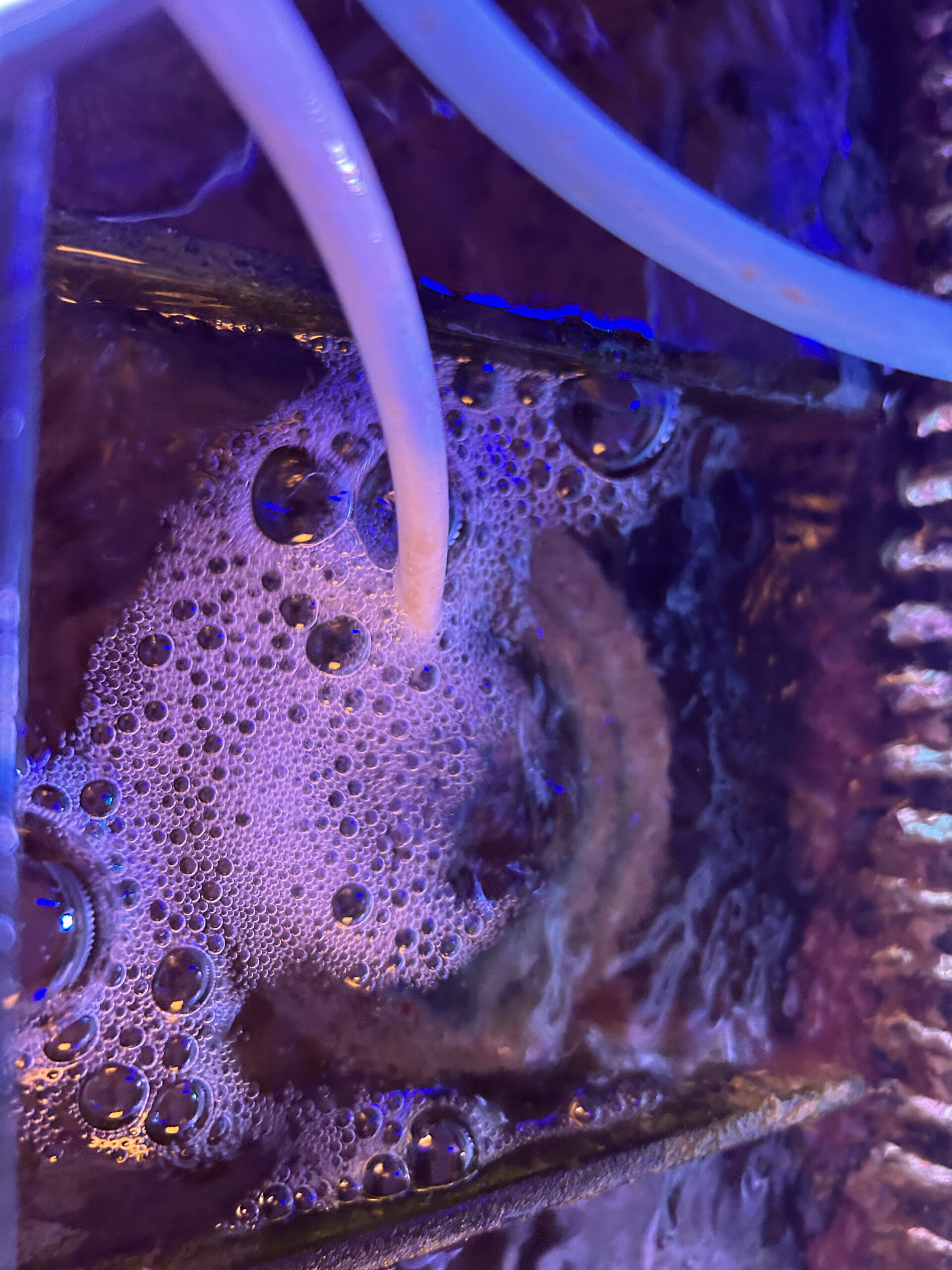
Going old-school
In addition to the above-noted changes, I went old-school and started dosing kalkwasser at night for the make-up water. At night the amount of make-up water being dosed is approximately two gallons so after much testing and evaluating I found that two gallons of kalkwasser at night further helped stabilize the pH at 8.1-8.2 t night and since the pH did not drop down into the low range as was the case before the addition of kalkwasser starting from a higher baseline helped the tank reach the 8.3-8.4 range more readily. I should note that with the addition of kalkwasser both calcium and alkalinity dosing needed to be adjusted down initially. So if kalkwasser is added to a system, additional testing needs to occur.
All of these changes had seemingly little impact initially as it took approximately 4-6 weeks for the pH to gradually move to the desired level. Similarly little observable difference was seen in the coral growth or in the demand for calcium or buffer. However, by the end of the second month, the pH had consistently climbed to the desired level and the consumption of both buffer and calcium had increased substantially as indicated by the need to increase the dosing of both. The consumption of buffer increased by over 35% and that of calcium by 20%, both signs of faster coral growth.
The increased growth in the corals was also apparent by the increased number of growth tips seen on many of the corals, as well as by the increased encrusting at the base of many. As a result of these findings on how much higher pH can impact coral health and growth monitoring, pH is now only behind alkalinity monitoring as my indicators for my tank’s health.
While understanding and optimizing pH are old-school aspects of the hobby that are not discussed often today, I have found that it can have a significant impact on a tank and on coral growth. Over the years I have manipulated many factors in my tanks, but I now realize why some of the factors that were considered important decades ago are still important today.
